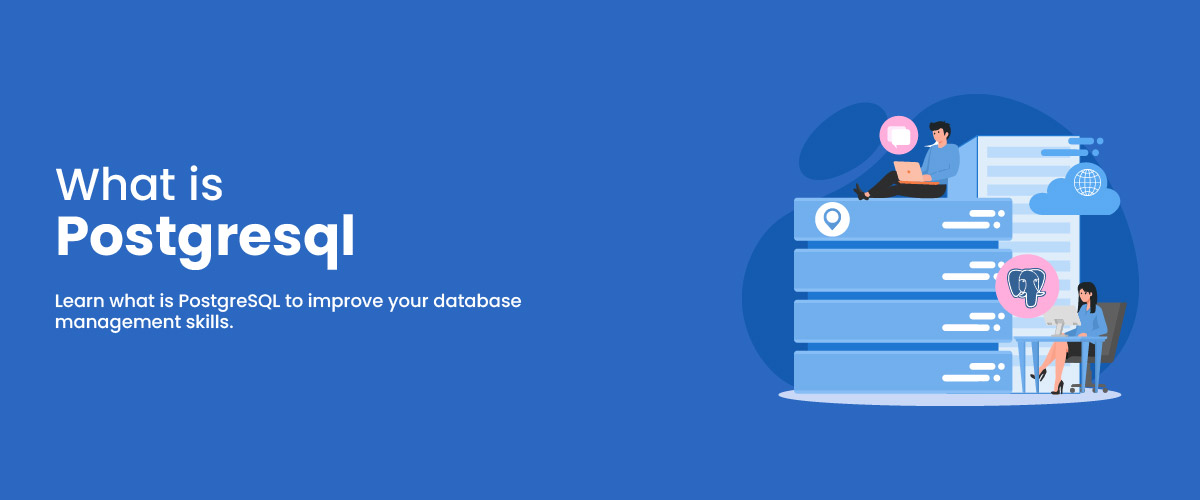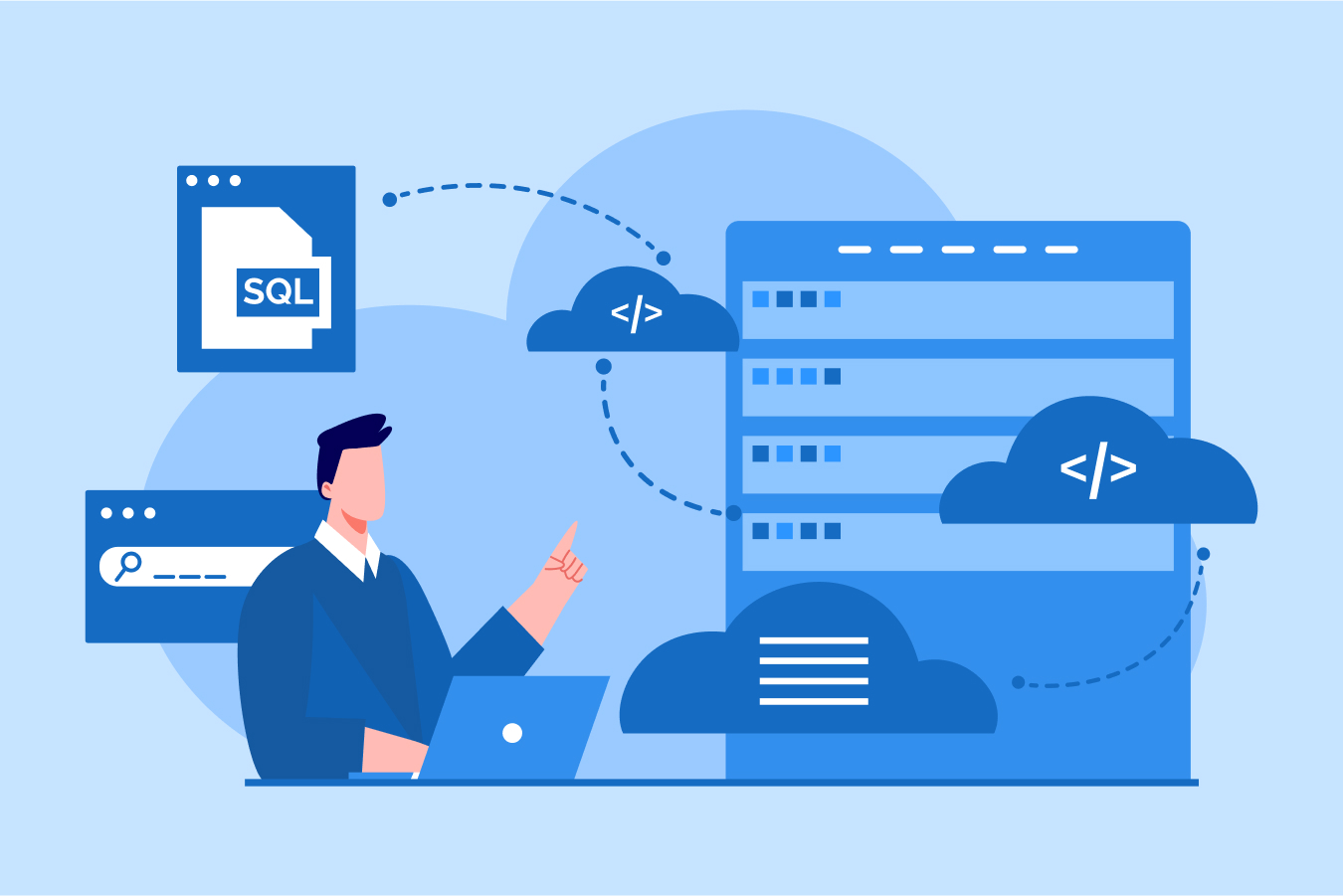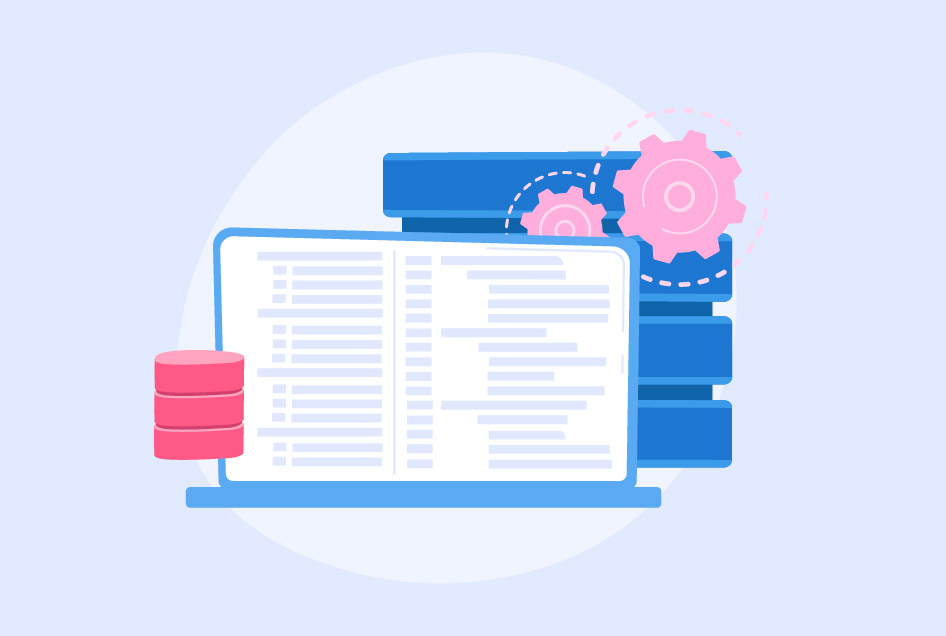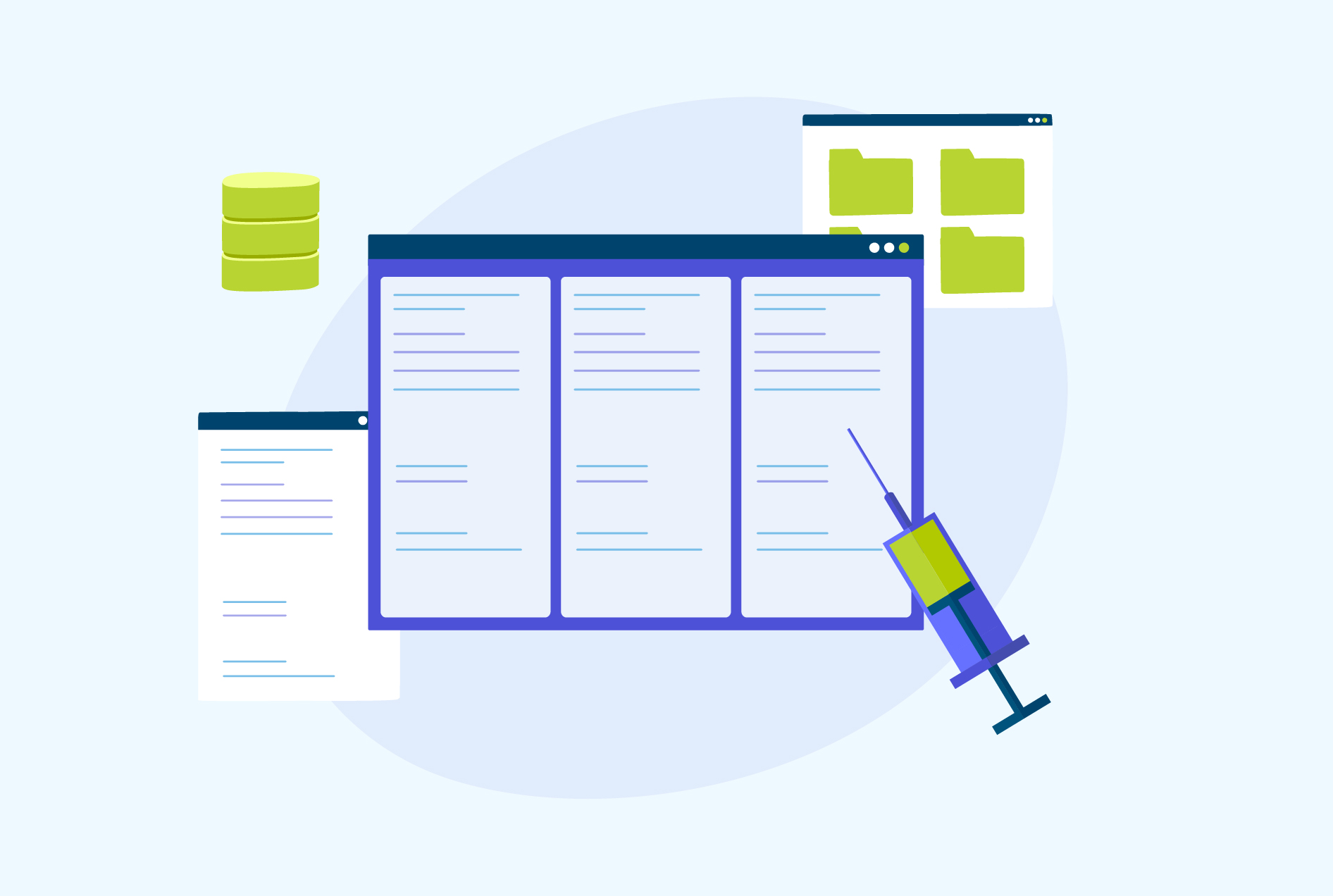What is PostgreSQL? Function, Commands and Architecture
PostgreSQL is an open-source database management system that is widely used. It supports SQL and JSON for relational and non-relational queries and provides a large selection of sophisticated data types, making it a popular application choice. You can create your own data types and define custom procedures in PostgreSQL.
It is a dependable and strong database management system with built-in functions and processes, making it an excellent choice for applications requiring consistency and integrity. In this blog, we will learn what is PostgreSQL, its features, commands, architecture, applications, advantages, and disadvantages.
PostgreSQL Architecture
Let us have a look at PostgreSQL architecture. It is broadly divided into two layers: the client-server model that is explained below in-depth:
Client Layer
It is responsible for establishing a connection between the client application and the PostgreSQL server. Any application that needs to interact with the database is included in the Client Layer. The client layer refers to the component that enables the applications to communicate with the PostgreSQL server. The client can be a graphical user interface, a command-line tool, or a web application.
Server Layer
This step consists of several processes that work together to provide database services. The following is a detailed explanation of those processes:
- Background Writer: It is responsible for writing dirty pages from shared buffers to disk.
- Postmaster: It is the main process that starts right after PostgreSQL is launched. It handles all other processes and manages incoming client connections.
- Checkpointer: It writes data from the WAL (write-ahead log) to the disk, and ensures that the changes are permanently stored.
- Autovaccum: It automatically performs garbage collection and maintenance of tasks on the database.
- Work Processes: The optional processes that are responsible to perform tasks like background index creation and parallel query execution.
- WAL Writer: This is used for crash recovery and is responsible to write the changes to the WAL.
- Shared Buffers: This is responsible for improving performance and the area of memory that holds frequently accessed data.
- Background Processes: The processes that perform different background tasks, like managing locks, collecting statistics, and handling the replication.
Read PostgreSQL Interview Questions and Answers to stand out in your interview.
Functions of PostgreSQL
PostgreSQL is known to be a relational database management system. You can pursue a SQL course to get a detailed understanding of the subject. Let us look at the key functions that PostgreSQL provides:
- Storage: It is intended to efficiently store massive volumes of data. It supports a wide range of data kinds, including built-in data types like character, integer, Boolean, and user-defined data types.
- Retrieval: It supports SQL commands and enables SQL querying capabilities to extract data from the database. For example, INSERT, SELECT, UPDATE, DELETE, and JOIN let users effortlessly access the relevant data.
- Manipulation: It offers several functionalities for manipulating the data contained in the database. Mathematical functions, string functions, aggregate functions, date/time functions, and so on are examples of these functions.
- Transaction Management: To maintain transactional integrity, it adheres to the ACID properties. It has capabilities for initiating, committing, and rolling back transactions.
- Replication: The replication function supports a number of mechanisms, including synchronous, asynchronous, physical, and logical replication. It also offers data redundancy and high availability.
- Security: This function aids in the protection of data from unauthorized access. It incorporates SSL encryption, authentication systems, and access control mechanisms among other security features.
- Restoration and Backup: It includes capabilities for restoring and backing up the database, as well as protecting data from inadvertent corruption.
- Stored Procedures: It supports stored procedures, which are user-defined functions that can be accessed by SQL queries. SQL, Python, and other programming languages can be used to create the procedures.
- Extensibility: It has a flexible design that allows users to increase the database system’s capability by adding functions and operators.
- Triggers: It supports triggers, which are stored procedures that are performed automatically when a specified event in the database takes place.
PostgreSQL Commands
In PostgreSQL, numerous commands are used for various purposes. Now that you have a basic understanding of what is psql, go cover the PostgreSQL commands listed below:
- psql: A PostgreSQL command-line interface allowing the user to run SQL queries and connect to a PostgreSQL database.
- \dt: A list of the current tables of databases is displayed.
- \d table_name: The layout of a table in the current database is displayed.
- \q: It quits the psql interface.
- CREATE DATABASE: This command generates a new database.
- DROP DATABASE: It is used to delete a database from the system.
- CREATE TABLE: It is used to make a new table.
- DROP TABLE: This command deletes a table from the database.
- INSERT INTO: This command is used to add new data to a table.
- SELECT: It queries data from a table.
- UPDATE: It is used to update the existing data of the table.
- DELETE: It is used to remove or delete data from a table.
- ALTER TABLE: It is used to change the structure of the table.
- GRANT: It is used to provide a user or group with privileges.
- REVOKE: It is used to revoke privileges from a user or group.
- CREATE INDEX: It is used to create the index of the table.
- DROP INDEX: It is used to delete the index of the table.
- SHOW: It is used to display the database.
Applications of PostgreSQL
PostgreSQL is well-known and widely utilized in a variety of domains. Its applications include the following:
- Web Applications: PostgreSQL can manage massive amounts of data and supports a broad range of programming languages and frameworks; hence it is utilized as a back-end database for web applications.
- Mobile Applications: PostgreSQL is utilized as a back-end database in mobile applications to handle and store data. Because it supports JSON data formats, it is ideal for handling data on mobile devices.
- Geographic Information Systems: PostgreSQL has built-in support for GIS data types and functions. That makes it a popular choice for analyzing and storing geospatial data.
- Content Management Systems: PostgreSQL is used as a database back-end for popular CMS systems like TYPO3, Drupal, and Plone.
- Financial Applications: PostgreSQL is used in financial applications like accounting systems, trading platforms, and payment processing systems.
Advantages of PostgreSQL
PostgreSQL is a reliable database system that offers a range of features and benefits for users. Enlisted below are some of its advantages:
- Open Source: PostgreSQL can be used for free and can be customized to meet specific needs. It allows users to modify and distribute the software freely.
- Reliability: It is known for its reliability. It has a strong reputation for being stable and dependable. It has built-in features like point-in-time recovery, transaction support, and crash-safe replication.
- Scalability: PostgreSQL handles large amounts of data and scales to support high-traffic applications. It offers built-in support for sharding and horizontal scale across multiple servers.
- Extensibility: It also allows users to extend the database’s capabilities. It provides a strong and adaptable extension system. PostgreSQL extensions are provided to add support for languages, certain data types, or protocols.
- Community: PostgreSQL has a huge user and developer community that is continually contributing to the software’s growth. This implies that users have access to a multitude of resources, such as forums, manuals, and mailing lists.
Disadvantages of PostgreSQL
With plenty of advantages, there are also a few disadvantages of PostgreSQL that are explained below:
- Complexity: In comparison to other databases, PostgreSQL makes setup and maintenance more complicated. It is a database with many features, but its complexity might be overwhelming.
- Limited Support: When difficulties arise, PostgreSQL makes it more difficult to get help. It has a significant user base, but it lacks the commercial support found in other databases.
- Resource Intensive: PostgreSQL is unsuitable for small-scale applications. It is a high-resource database that requires more powerful hardware than other databases.
Conclusion
PostgreSQL is widely utilized in a range of applications and is well-known for its high performance, dependability, and stability. It has a wide range of proficient capabilities, including SQL and JSON support. With a grasp of what is PostgreSQL, you are ready to go on a database management adventure.






